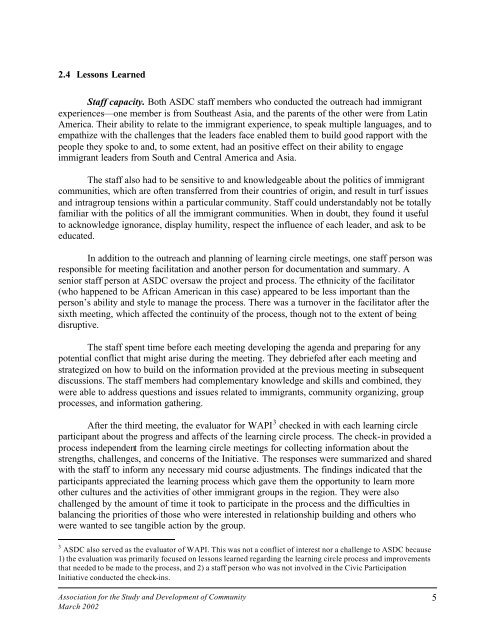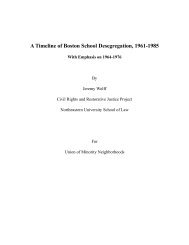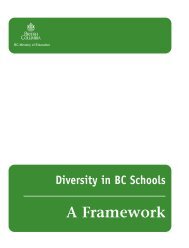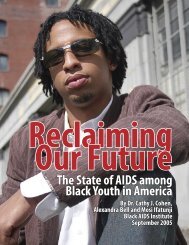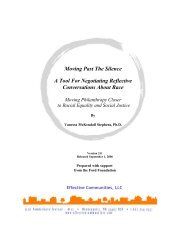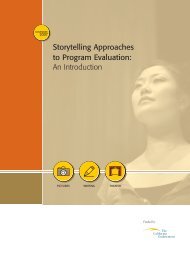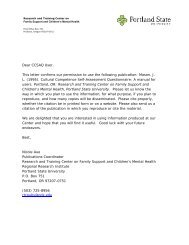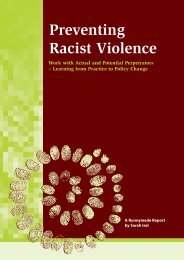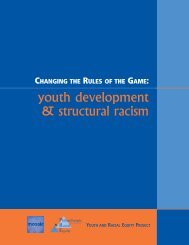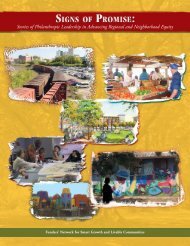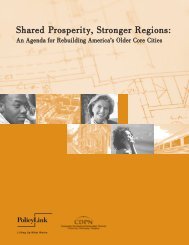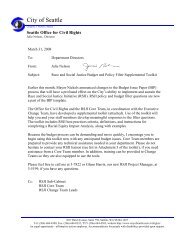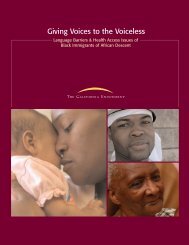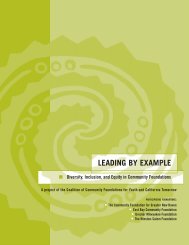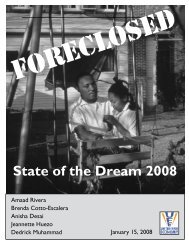lessons learned about civic participation among immigrants
lessons learned about civic participation among immigrants
lessons learned about civic participation among immigrants
Create successful ePaper yourself
Turn your PDF publications into a flip-book with our unique Google optimized e-Paper software.
2.4 Lessons LearnedStaff capacity. Both ASDC staff members who conducted the outreach had immigrantexperiences—one member is from Southeast Asia, and the parents of the other were from LatinAmerica. Their ability to relate to the immigrant experience, to speak multiple languages, and toempathize with the challenges that the leaders face enabled them to build good rapport with thepeople they spoke to and, to some extent, had an positive effect on their ability to engageimmigrant leaders from South and Central America and Asia.The staff also had to be sensitive to and knowledgeable <strong>about</strong> the politics of immigrantcommunities, which are often transferred from their countries of origin, and result in turf issuesand intragroup tensions within a particular community. Staff could understandably not be totallyfamiliar with the politics of all the immigrant communities. When in doubt, they found it usefulto acknowledge ignorance, display humility, respect the influence of each leader, and ask to beeducated.In addition to the outreach and planning of learning circle meetings, one staff person wasresponsible for meeting facilitation and another person for documentation and summary. Asenior staff person at ASDC oversaw the project and process. The ethnicity of the facilitator(who happened to be African American in this case) appeared to be less important than theperson’s ability and style to manage the process. There was a turnover in the facilitator after thesixth meeting, which affected the continuity of the process, though not to the extent of beingdisruptive.The staff spent time before each meeting developing the agenda and preparing for anypotential conflict that might arise during the meeting. They debriefed after each meeting andstrategized on how to build on the information provided at the previous meeting in subsequentdiscussions. The staff members had complementary knowledge and skills and combined, theywere able to address questions and issues related to <strong>immigrants</strong>, community organizing, groupprocesses, and information gathering.After the third meeting, the evaluator for WAPI 3 checked in with each learning circleparticipant <strong>about</strong> the progress and affects of the learning circle process. The check-in provided aprocess independent from the learning circle meetings for collecting information <strong>about</strong> thestrengths, challenges, and concerns of the Initiative. The responses were summarized and sharedwith the staff to inform any necessary mid course adjustments. The findings indicated that theparticipants appreciated the learning process which gave them the opportunity to learn moreother cultures and the activities of other immigrant groups in the region. They were alsochallenged by the amount of time it took to participate in the process and the difficulties inbalancing the priorities of those who were interested in relationship building and others whowere wanted to see tangible action by the group.3 ASDC also served as the evaluator of WAPI. This was not a conflict of interest nor a challenge to ASDC because1) the evaluation was primarily focused on <strong>lessons</strong> <strong>learned</strong> regarding the learning circle process and improvementsthat needed to be made to the process, and 2) a staff person who was not involved in the Civic ParticipationInitiative conducted the check-ins.Association for the Study and Development of CommunityMarch 20025


